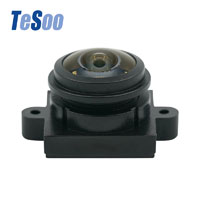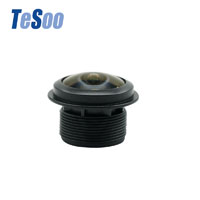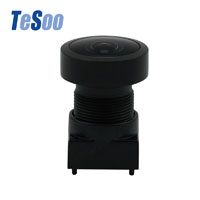The Parameters and Terms of the Dash Camera Lens
The imaging quality of the recorder depends on three key components: the dash camera lens, the image sensor (sensor) and the main control chip. So let's learn about some parameters and terms related to the dash camera lens.
1. The focal length of the dash camera lens
The focal length refers to the distance from the center of the lens to the focal point. The driving recorder uses a lens with a small focal length, and the focal length is generally about 2.8mm. One of the features of these short focal length dash cam lenses is that it can bring out clearer images both in the distance and in the near distance.
2. The aperture of the dash camera lens
Aperture is the focal length/diameter of the clear aperture. The larger the clear aperture, the more light received in the same time, and the brighter the image will be. Therefore, the aperture value is a very important parameter on the recorder. Obviously, The smaller the value, the better. The common aperture value of recorders is about 2.8, and there are also large apertures (smaller values), but they will be more expensive.
3. The angle of view of the dash camera lens
As one of the most professional automotive lens manufacturers, we produce high-quality dash camera lenses. As for the viewing angle range, it is divided into horizontal viewing angle and vertical viewing angle. Without specifying, it should refer to the horizontal viewing angle. The horizontal angle of view refers to the angle formed by the leftmost and rightmost of the screen to the lens. The larger the angle, the wider the viewing range. The vertical angle of view is the angle between the top and bottom of the screen and the camera lens of the dash cam.
Since our screen ratio is either 4:3 or 16:9, the ratio of horizontal and vertical viewing angles is also fixed. The diagonal angle of view is the angle between the upper left corner and the lower right corner of the lens. Obviously, this value is larger than the previous two values. Generally, when businesses promote the viewing angle range, they refer to the diagonal viewing angle as the viewing angle, not the horizontal viewing angle.
4. Resolution of the dash camera lens
This is a parameter that reflects the ability of the dash cam lens to resolve the smallest details. This parameter gives you an intuitive feeling whether the image is sharp or not.
5. The transmittance of the dash camera lens
It is the ratio of the intensity of light passing through to the intensity of the light shining on it. Obviously, the better the light transmittance, the brighter the image. This is related to the craftsmanship and material of the lens.
6. Distortion of the dash camera lens
Because the recorder needs to have a relatively large angle, so that more events can be recorded, a wide-angle lens with a large angle is often used. These wide-angle lenses can easily distort the captured images, and straight objects are often photographed as arcs shape. This is distortion, which makes the image look uncomfortable. Fortunately, there are basically no requirements for this parameter on the recorder.
Popular Camera Lens
Hot Camera Lens Articles

 English
English 

